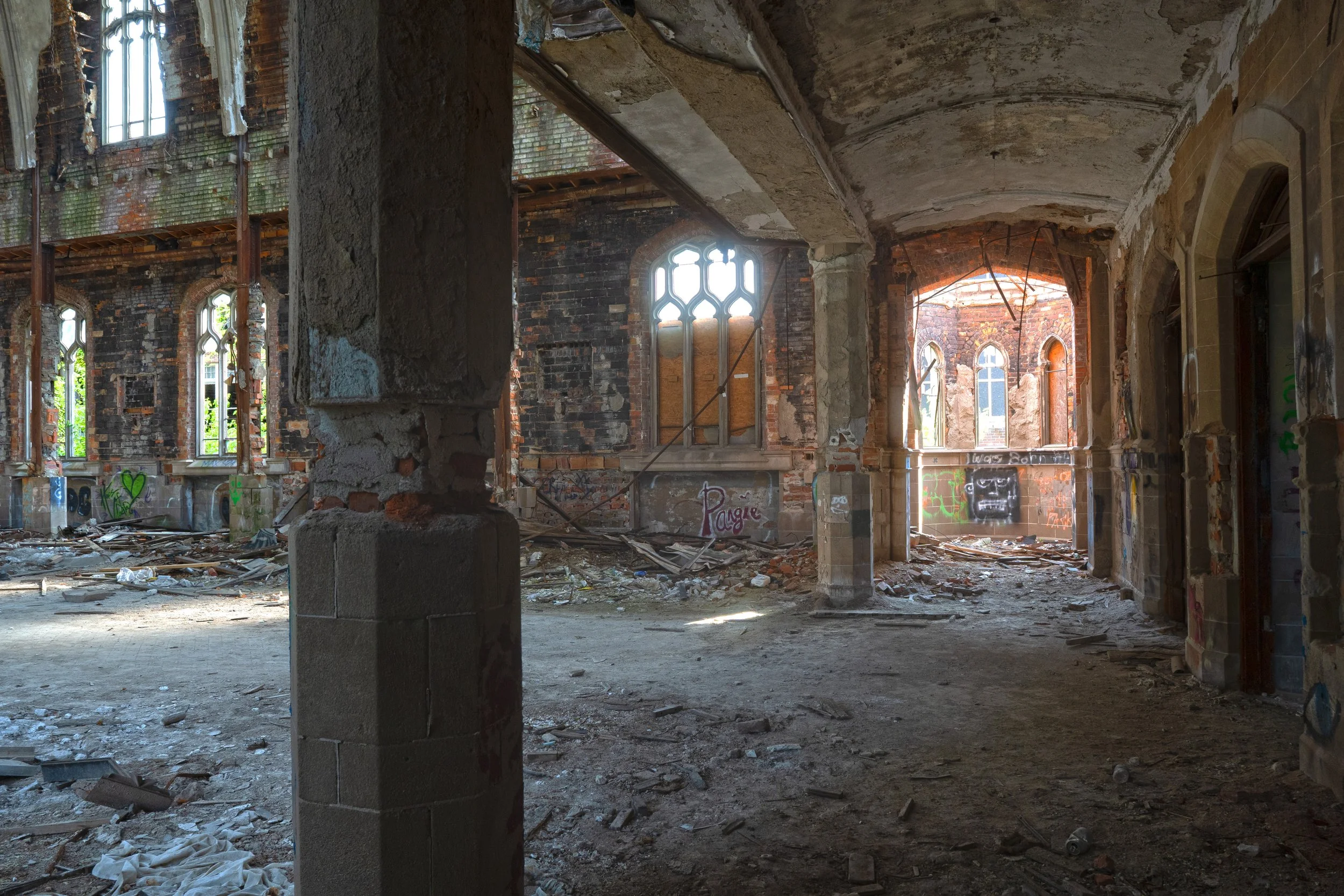
St Anges Catholic Church
1925 S La Salle Gardens, Detroit, MI 48206
-Abandoned 2006
|High Resolution Page|
Locate it!
History of St Agnes Catholic Church
As Detroit expanded into the 1910s, Bishop John S. Foley bought land on LaSalle and 12th streets, which at the time was merely farmland. Foley entrusted Rev. Father Charles E. Henigan to organize what would become the first building of St. Agnes Catholic Church.This small, modest frame house was only the beginning of what was to come when it celebrated its first Mass in April of 1914, with a capacity of 200 people. Two years later, construction on St.Agnes School began, and a much larger church, which is the St.Agnes we know today, began construction in 1922. The following year, in November of 1923, the church would open. The La Salle Gardens neighborhood would grow to become one of wealth and many stately homes. Being close to the prestigious Boston Edison neighborhood and just west of New Center helped it become one of the staples of the Catholic Church in Detroit. By 1964, the number of families at St. Agnes reached 1,600. However, this milestone would be short lived, as the 1967 riots of Detroit destroyed much of the neighborhood, with 12th St. being the hardest hit. However, St. Agnes dodged next to no damage to the grand church. However by this time, much of the white population of Detroit began moving to the suburbs in droves. Much of this was caused by issues in the city before the riots, but for many, it was the riots that prompted them to move. St. Agnes would continue on with some of its most notable moments, though with a shrinking congregation. In 1971, St. Agnes' pastor, the Rev. Edward Farrell, had a chance meeting on a plane with Mother Teresa, who founded the order of Catholic nuns known as the Missionaries of Charity in 1947. On an impulse, Farrell asked the famed nun if she would establish a convent in Detroit. On June 23, 1979, she visited St. Agnes to announce that she was granting Farrell his wish. Mother Teresa would make many visits to St. Agnes in the coming years. In 1976, 12th St.was renamed Rosa Parks Blvd. after Rosa Parks,who had moved to Detroit in 1957 and ultimately settled in a home a mile from St. Agnes. In a special service in 1981 at St. Agnes, Rosa Parks and Mother Teresa spoke against abortion in front of over 1,000 people in attendance. However, this service was not a revival point for St. Agnes' congregation, as by 1986, only 162 families called St. Agnes home. In 1989, the Archdiocese of Detroit closed around 30 churches in the city. St. Agnes managed to avoid the cut for a little while, being selected instead that year to merge with St. Theresa Avila. The newly formed congregation would be renamed the Martyrs of Uganda Church, and it would call the St. Agnes building home. St. Agnes School closed in 2000 and was used for storage and events. As another round of church closings came up in 2006, it was decided that the relatively few number of parishioners at Martyrs of Uganda, as well as the poor condition of the building, made it impractical to continue. The parish was closed in June of that year, with around 90 members transferring to St. Cecilia Church. In 2007, the Archdiocese of Detroit removed much of anything of value, including the pews, stations of the cross, and many smaller artifacts. By 2009, St. Agnes began to be vandalized on a very large scale, and by 2012, much of what remained had been scrapped or decayed significantly. Though many buyers have purchased and later abandoned their projects on St. Agnes, its final blow would come days after abandonedcommercialdetroit.com explored both the school and church in June 2025, when a two-alarm fire broke out in the adjacent rectory to the church. Though the church remained intact, lots of debris fell into the main sanctuary. It is unlikely now that St.Agnes will see the rebirth many Detroit icons like it have experienced.

Recollection from the author
St Agnes a example of a once grand sanctuary. Every Urban Explorer has heard of St Agnes it is along many lists as the best abandoned location in Detroit. Though a simple exploration the architecture definitely makes this one of if not the best church explored on this page. Though as noted as well by many other explorers St Agnes looks like it has been abandoned for more time then it actual has. Knowing the history of St Agnes added to the feeling inside the place knowing both Rosa Parks and Mother Teresa had both attend services at St Agnes.
Altar of St Agnes Church
St Agnes uses a very prominent example of Gothic Architecture
Looking back at the front of the church from the altar
Main Entrance
Many parts of St Agnes have seen better days including the roof in spots
The Balcony once hosted a organ that was scrapped out by vandals
Main sanctuary as seen from the balcony
back of the sanctuary next to the front entrance
right side of the sanctuary facing towards the altar
left side of the sanctuary facing towards the altar
altar space
some designs on the altar remain intact though covered in years of debris
confession booths
altar space
altar space
gothic architecture lines the altar space
















